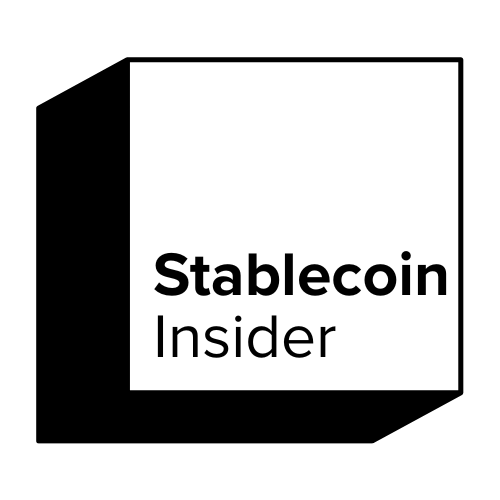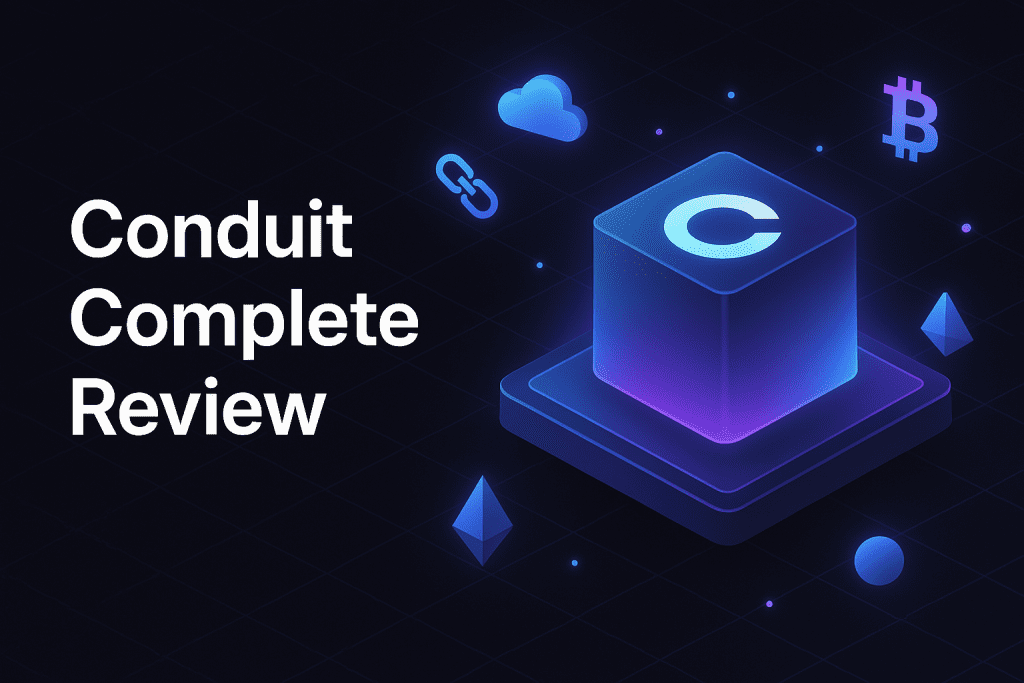Conduit is a leading Web3 infrastructure company that empowers developers and businesses to launch and manage their own rollups using the OP Stack. With the rise of modular blockchain architecture, Conduit offers a simplified, scalable, and powerful solution for launching Layer 2 networks without requiring deep protocol expertise. This review explores everything you need to know about Conduit—from its core features to its pricing model and future outlook.
Key Takeaways
- Conduit is a Web3 infrastructure provider focused on OP Stack-based rollup deployment.
- It enables fast, scalable, and cost-efficient blockchain development.
- Conduit provides a hands-off, DevOps-free experience for running rollups.
What is Conduit?
Conduit positions itself as a backbone for Web3 scalability by offering developers an easy path to launching Layer 2 solutions. The company’s mission is to simplify blockchain infrastructure so more creators and businesses can build without DevOps bottlenecks. Founded by industry veterans, Conduit is building critical tools for a modular future.
Company Background
Conduit was founded to solve the complexity of launching and operating rollups. Its team includes engineers with deep experience in Ethereum and rollup technology. The company operates at the intersection of scalability, simplicity, and Web3 empowerment.
Role in the Blockchain Ecosystem
In a world where modular blockchains are gaining traction, Conduit plays a crucial role. It removes barriers to entry for developers wanting to experiment with or scale Layer 2 ecosystems. Its focus on the OP Stack helps standardize rollup development.
How Conduit Works
Conduit offers a managed infrastructure platform built on the OP Stack, which simplifies the deployment of rollups. The idea is to abstract the complexities of rollup operations so that developers can focus on their core applications. With a mix of automation and intuitive tools, Conduit drastically shortens the time it takes to launch a network.
OP Stack Explained
The OP Stack is an open-source framework created by Optimism to power Layer 2 chains. It allows for high throughput, low fees, and Ethereum compatibility. Conduit leverages this technology to power its rollup deployments.
Rollups-as-a-Service (RaaS)
Conduit offers RaaS by handling all the backend complexities. Developers just need to configure a few options, and Conduit takes care of the rest.
- Automatic node updates
- Monitoring and alerts
- Deployment in a matter of minutes
Developer Workflow
Users can deploy and manage their rollups with a simple dashboard. The process involves minimal configuration, and Conduit handles the rest.
Features and Benefits
Conduit packs a host of features designed to make rollup deployment easy, scalable, and reliable. The platform balances user-friendliness with enterprise-grade functionality. This section highlights the key features that make Conduit a strong option for Web3 builders.
Key Features
- One-click rollup deployment with OP Stack
- Developer dashboard with performance metrics
- Ethereum compatibility
Benefits
Developers gain faster time-to-market and reduce infrastructure overhead. The simplicity also helps smaller teams experiment and iterate quickly. With built-in monitoring and support, scaling becomes seamless.
Supported Use Cases
Conduit is designed to support a wide range of blockchain-based applications. From NFTs to decentralized finance, the flexibility of the OP Stack means that most Web3 use cases are supported. Here are some common areas where Conduit is being used today.
NFT and Creator Platforms
Projects like Zora use Conduit to launch their NFT ecosystems. The scalability and low fees are ideal for creator-focused apps.
DeFi Protocols and DEXs
Decentralized exchanges benefit from low latency and high throughput. Rollups deployed via Conduit help provide smoother user experiences.
Other Use Cases
- Gaming and metaverse worlds
- DAO governance platforms
- Experimental Web3 applications
Conduit Customers and Ecosystem
A growing number of Web3 platforms are turning to Conduit for infrastructure. These include prominent players in the NFT, DeFi, and Layer 2 spaces. Conduit’s track record and reliability make it a strong choice for mission-critical applications.
Known Clients
- Zora Network: An NFT-centric platform using rollups for scalability.
- Aevo: A decentralized derivatives exchange.
- Mode: A high-performance Layer 2 chain.
These clients trust Conduit for its uptime, performance, and ease of use. As its ecosystem grows, Conduit is poised to become a foundational layer of the modular Web3 stack.
Pricing Model
Conduit offers transparent pricing that caters to both startups and enterprises. The model is designed to be flexible so that projects at any stage can leverage its tools. Here’s a look at what to expect.
Plan Breakdown
- Free Plan: Ideal for prototyping and small projects.
- Enterprise Plan: Custom pricing for large-scale deployments.
Compared to alternatives, Conduit provides good value by bundling DevOps, monitoring, and scalability into one platform. Custom packages are available for projects with unique needs.
Pros and Cons
No platform is perfect. Conduit excels in many areas, but it has some limitations too. Here’s a balanced look.
Pros
- Intuitive interface and quick deployment
- Trusted by leading Web3 platforms
- Eliminates the need for a dedicated DevOps team
Cons
- Focuses heavily on the OP Stack (may not suit everyone)
- Custom module integration could use more documentation
How Conduit Compares to Alternatives
In the rapidly evolving RaaS market, Conduit faces competition from platforms like Celestia, Altlayer, and Rollkit. But it has carved out a strong niche with its OP Stack focus. Let’s compare.
Conduit vs Celestia
Celestia offers data availability, not full rollup infrastructure. Conduit is more hands-on and application-ready.
Conduit vs Altlayer
Altlayer supports multiple frameworks but is more complex. Conduit focuses on simplicity and speed.
Conduit vs Rollkit
Rollkit is more DIY. Conduit provides a managed service that reduces technical overhead.
| Feature | Conduit | Celestia | Altlayer | Rollkit |
|---|---|---|---|---|
| OP Stack Support |  |  |  |  |
| Managed Deployment |  |  |  |  |
| DevOps Required |  |  |  |  |
| Use Case Simplicity |  |  |  |  |
Roadmap and Future Plans
Conduit is actively expanding its feature set and ecosystem. The team is focused on maintaining high reliability while rolling out new tools for developers. Looking ahead, Conduit’s vision is to be the default platform for launching rollups.
Upcoming Features
- Enhanced analytics and dashboards
- More Layer 1 integrations
- Additional automation tools
Ecosystem Growth
New partnerships and integrations are expected throughout 2025. Conduit is also investing in developer education and support.
Final Verdict
Conduit is a standout platform for developers and businesses looking to deploy rollups quickly and efficiently. Its commitment to user experience and scalability makes it especially appealing to startups and fast-moving Web3 projects. If you want to avoid DevOps and launch a rollup in minutes, Conduit is hard to beat.
Who Should Use Conduit?
- Web3 startups
- NFT and DeFi platforms
- dApp developers scaling beyond Ethereum mainnet
The platform is not ideal for those who need bespoke, deeply customized chains outside the OP Stack ecosystem. However, for most use cases, it’s a high-performing and accessible solution.
Read Next:
FAQ
1. Is Conduit open source?
While Conduit integrates open-source components like the OP Stack, its infrastructure tools are proprietary.
2. What chains does Conduit support?
Conduit primarily supports Ethereum-based rollups via the OP Stack. Additional chain support is planned.
3. Can I migrate my rollup to another provider?
Yes, migration is possible, although it may require technical guidance.
4. Is Conduit suitable for non-technical founders?
Absolutely. Its no-code and no-DevOps approach is ideal for entrepreneurs without a tech background.
5. How fast can I launch a rollup using Conduit?
Most rollups can be deployed in minutes, depending on configuration.
6. What kind of support does Conduit offer?
Conduit offers comprehensive documentation and dedicated support for paying clients and enterprises.

